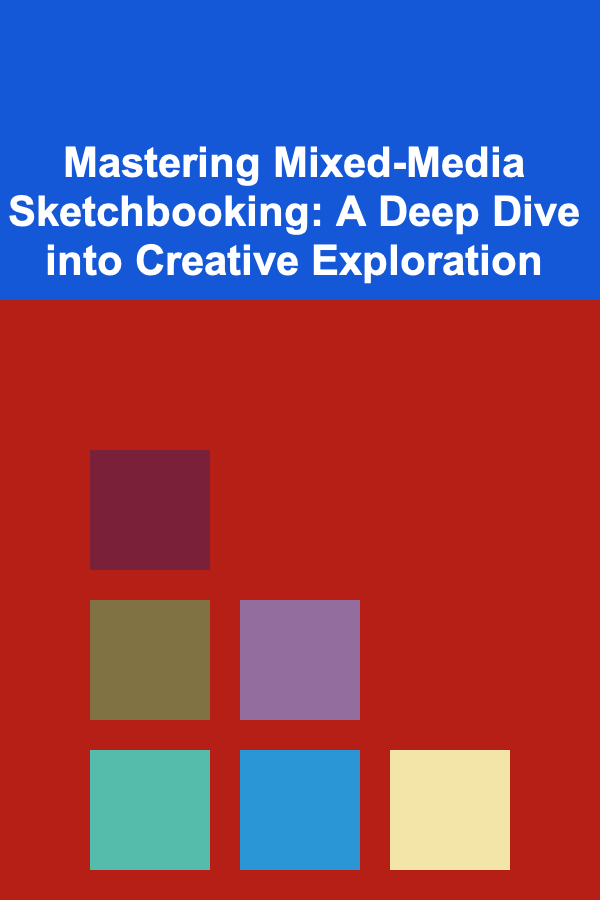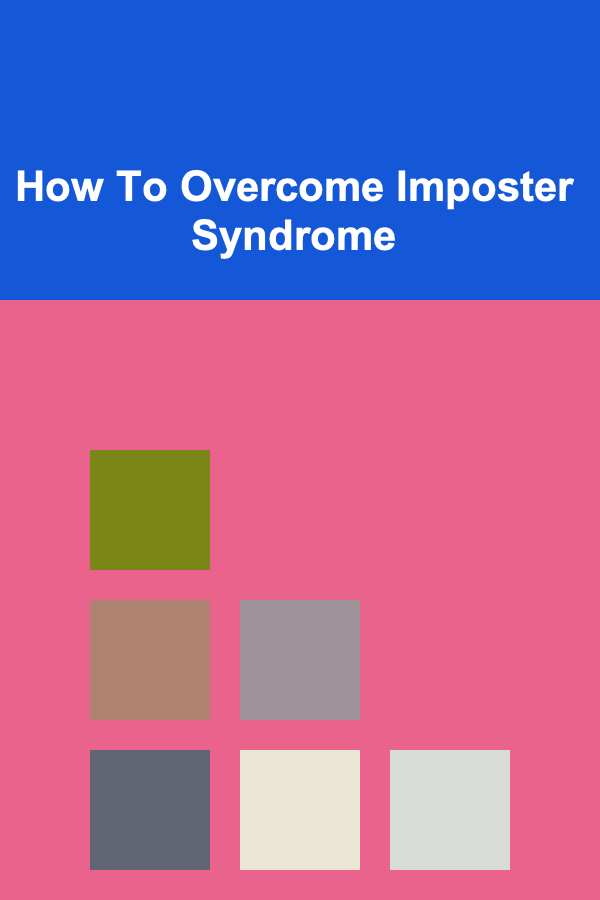
Mastering Mixed-Media Sketchbooking: A Deep Dive into Creative Exploration
ebook include PDF & Audio bundle (Micro Guide)
$12.99$11.99
Limited Time Offer! Order within the next:

Mixed-media sketchbooking is more than just putting different art supplies together in a book. It's a dynamic and enriching art form that encourages experimentation, fosters creativity, and allows you to express yourself in unique and compelling ways. It's about breaking down the barriers between different mediums, embracing happy accidents, and building a visual diary that reflects your individual artistic journey. This comprehensive guide will delve into the core principles of mixed-media sketchbooking, providing you with the knowledge, techniques, and inspiration needed to unlock your creative potential.
Why Choose Mixed-Media Sketchbooking?
Before diving into the specifics, let's explore the compelling reasons to embrace mixed-media sketchbooking:
- Unleashing Creativity: Mixed media removes the limitations imposed by a single medium. You're free to combine watercolors with collage, ink with acrylics, and so much more. This freedom fuels creativity and encourages you to think outside the box.
- Developing a Unique Style: Experimentation is key to finding your artistic voice. By trying different combinations of materials and techniques, you'll naturally gravitate towards those that resonate with you, leading to the development of a distinctive and personal style.
- Expressing Complex Ideas: Some ideas are best expressed through a combination of different elements. Mixed media allows you to layer textures, colors, and imagery to create richer and more nuanced representations of your thoughts and emotions.
- Problem Solving and Adaptability: When you work with mixed media, things don't always go as planned. Learning to adapt to unexpected results and finding creative solutions to technical challenges is a valuable skill that translates to other areas of life.
- Mindfulness and Relaxation: The act of creating, regardless of the outcome, can be incredibly therapeutic. Mixed media sketchbooking provides a focused outlet for your energy, allowing you to relax, de-stress, and connect with your inner self.
- Documenting Your Journey: A mixed-media sketchbook becomes a visual record of your artistic growth, experiments, and inspirations. It's a tangible reminder of your progress and a source of inspiration for future projects.
Choosing Your Sketchbook and Materials
The foundation of any mixed-media sketchbook is, of course, the sketchbook itself. Choosing the right one is crucial for a successful and enjoyable experience. Here's what to consider:
The Sketchbook
- Paper Weight (GSM): This refers to the thickness of the paper. For mixed media, you'll want a sketchbook with a paper weight of at least 140 gsm (grams per square meter). 200gsm or higher is even better, as it will prevent buckling and bleed-through when using wet media like watercolors and acrylics.
- Paper Texture: Different textures are suited for different mediums. Hot-pressed paper is smooth and ideal for detailed pen and ink work. Cold-pressed paper has a slight texture and is well-suited for watercolors and other wet media. Rough paper has a very pronounced texture and is great for dry media like charcoal and pastels. Experiment to see which texture you prefer.
- Binding: Consider the binding type. Spiral-bound sketchbooks allow the book to lay flat, making it easier to work on. Case-bound sketchbooks are more durable and have a professional look. Consider a sketchbook with a hard cover for added protection and portability.
- Size: The size of your sketchbook depends on your personal preference and the type of work you plan to do. Smaller sketchbooks are great for on-the-go sketching, while larger sketchbooks provide more space for complex compositions. A5 (148mm x 210mm) is a versatile size to start with.
- Acid-Free Paper: Ensure your sketchbook uses acid-free paper to prevent your artwork from yellowing and deteriorating over time.
- Brand Recommendations: Some popular sketchbook brands known for mixed-media suitability include Moleskine (specifically the Watercolor Album), Strathmore (Mixed Media Pads), Canson (Mixed Media XL Pads), and Hahnemühle (various sketchbooks).
The Materials: A Kaleidoscope of Possibilities
The beauty of mixed media lies in the endless possibilities. Here's a breakdown of common materials and their uses:
Drawing Materials
- Pencils (Graphite and Colored): Graphite pencils are essential for sketching and underdrawings. Colored pencils add vibrant hues and can be used for shading, blending, and detail work. Consider using a range of hardnesses (e.g., HB, 2B, 4B) for graphite pencils.
- Pens (Ink, Gel, Fineliner): Ink pens offer permanence and precision. Gel pens provide smooth, opaque lines. Fineliners are ideal for detailed linework. Waterproof inks are essential if you plan on layering wet media on top. Experiment with different nib sizes.
- Charcoal (Vine and Compressed): Charcoal creates rich, dark tones and is excellent for creating dramatic effects. Vine charcoal is soft and easy to blend, while compressed charcoal is darker and more permanent.
- Pastels (Soft and Oil): Pastels offer vibrant colors and a velvety texture. Soft pastels are easily blended, while oil pastels are more permanent and can be blended with solvents.
- Markers (Alcohol-Based and Water-Based): Alcohol-based markers offer smooth, even coverage and are great for creating vibrant color gradients. Water-based markers are more controllable and can be blended with water.
Painting Materials
- Watercolors (Pans and Tubes): Watercolors are transparent and luminous, perfect for creating washes and glazes. Pans are portable and convenient, while tubes offer more control over color mixing.
- Acrylics (Heavy Body and Fluid): Acrylics are versatile and opaque, allowing you to build up layers of color and texture. Heavy body acrylics are thick and ideal for impasto techniques, while fluid acrylics are thinner and great for washes and glazing.
- Gouache: Gouache is an opaque watercolor paint that offers vibrant colors and a matte finish. It can be re-wetted like watercolor, but dries to an opaque finish.
- Inks (Acrylic, India, Sumi): Inks offer rich, saturated colors and can be used for calligraphy, washes, and mixed-media techniques. Acrylic inks are water-resistant when dry. India ink is permanent. Sumi ink is traditionally used in East Asian calligraphy and painting.
Collage Materials
- Paper (Various Types): Experiment with different types of paper, such as patterned paper, tissue paper, newspaper, magazines, and handmade paper. Consider the weight, texture, and color of each paper.
- Fabric Scraps: Fabric adds texture and visual interest to your artwork. Use different fabrics like cotton, linen, silk, and lace.
- Found Objects: Incorporate found objects like leaves, flowers, buttons, beads, and other small items. Consider their texture and shape.
- Adhesive: Use a strong adhesive like glue stick, gel medium, or double-sided tape to attach your collage elements to the page. Ensure it is acid-free to prevent deterioration.
Other Essential Supplies
- Brushes (Various Sizes and Shapes): Invest in a variety of brushes for different techniques. Round brushes are great for detail work, while flat brushes are ideal for washes.
- Palette: Use a palette to mix your paints. A ceramic plate or a plastic palette works well.
- Water Container: Keep a clean water container handy for rinsing your brushes.
- Paper Towels: Use paper towels to wipe your brushes and clean up spills.
- Masking Tape: Masking tape can be used to create clean edges and protect areas of your artwork.
- Scissors and Craft Knife: Use scissors and a craft knife to cut collage elements and other materials.
- Ruler: A ruler is helpful for drawing straight lines and measuring distances.
- Fixative: Use a fixative to protect your drawings from smudging, especially when working with charcoal and pastels.
- Gesso: Gesso is a primer that can be applied to paper to create a smoother surface and improve the adhesion of paint.
- Stencils and Stamps: These can be used to add patterns and textures to your artwork.
Techniques for Mixed-Media Sketchbooking
Once you have your materials gathered, it's time to explore different techniques for mixed-media sketchbooking. Here are a few to get you started:
Layering
Layering is the foundation of most mixed-media techniques. It involves building up your artwork by adding different materials and textures on top of each other. This creates depth, visual interest, and complexity.
- Start with a Base Layer: Begin with a light wash of watercolor or acrylic paint as a base layer. This will provide a foundation for your other materials.
- Add Drawing Elements: Once the base layer is dry, add drawing elements such as pencil lines, ink sketches, or charcoal shading.
- Incorporate Collage: Glue collage elements onto the page, overlapping them to create interesting textures and compositions.
- Add Details: Finish with details using colored pencils, markers, or fine-tipped pens.
Blending
Blending involves smoothly merging different colors and textures together. This creates a sense of harmony and unity in your artwork.
- Wet-on-Wet: Apply wet paint onto wet paper to create soft, blended effects. This technique is particularly useful for watercolors.
- Dry Brushing: Use a dry brush with a small amount of paint to create textured effects.
- Blending Stumps: Use blending stumps or tortillions to blend charcoal, pastels, and pencils.
- Water Blending: Use a damp brush to blend water-soluble materials like watercolors and water-based markers.
Texturing
Texturing adds tactile and visual interest to your artwork. It can be achieved using a variety of materials and techniques.
- Dry Brushing: As mentioned above, dry brushing is a great way to create texture.
- Spattering: Flick paint onto the page with a brush or toothbrush to create a speckled effect.
- Stippling: Create texture by using dots of ink or paint.
- Collage: Incorporating textured materials like fabric, paper, and found objects is an easy way to add texture.
- Using Texture Mediums: Acrylic texture mediums can be added to paint to create different textures like sand, gel, or pumice.
Resist Techniques
Resist techniques involve using a material to block paint or ink from reaching certain areas of the page. This creates interesting patterns and effects.
- Wax Resist: Draw with a wax crayon or candle, then paint over the area with watercolor or ink. The wax will resist the paint, leaving the drawing visible.
- Masking Fluid: Apply masking fluid to areas you want to protect, then paint over the area. Once the paint is dry, peel off the masking fluid to reveal the protected areas.
- Salt: Sprinkle salt onto wet watercolor paint. As the paint dries, the salt will absorb the water, creating interesting patterns.
Lifting
Lifting involves removing paint or ink from the page to create highlights or correct mistakes.
- Blotting: Use a paper towel or sponge to blot wet paint or ink, creating a lighter area.
- Lifting with a Brush: Use a clean, damp brush to lift paint from the page.
- Eraser: Use an eraser to lift pencil lines or charcoal shading.
Collage Integration
Collage goes beyond just sticking paper down. Think about how it interacts with the painted and drawn elements. Consider these ideas:
- Torn Edges: Tearing paper instead of cutting it gives a softer, more organic edge.
- Layering Collage: Overlap different collage elements to create depth and complexity.
- Adding Paint or Ink to Collage: Paint or draw on top of your collage elements to integrate them into the overall composition. This can help create a sense of unity.
- Using Collage as Texture: Consider crumpling or folding paper before adhering it to the page to create texture.
Finding Inspiration and Developing Your Style
The key to mastering mixed-media sketchbooking is to practice regularly and experiment with different materials and techniques. Don't be afraid to make mistakes -- they are often the best learning opportunities. Here are some tips for finding inspiration and developing your own unique style:
- Observe the World Around You: Pay attention to the colors, textures, and shapes you see in your everyday life. Take photos, sketch from life, and collect interesting objects.
- Study Other Artists: Look at the work of other artists who use mixed media. Analyze their techniques and compositions, and try to incorporate elements of their style into your own work. Don't just copy, but learn from them.
- Experiment with Different Materials: Try combining different materials and techniques that you haven't used before. See what happens when you mix watercolors with oil pastels, or ink with collage.
- Set Challenges for Yourself: Create challenges for yourself, such as creating a sketchbook spread based on a specific theme, color palette, or technique.
- Don't Be Afraid to Fail: Not every sketchbook spread will be a masterpiece. The important thing is to keep creating and learning. Embrace the process and don't worry too much about the outcome.
- Develop a Visual Library: Collect images, textures, patterns, and color palettes that you find inspiring. Keep them in a folder or online mood board. Refer to this visual library when you're looking for inspiration.
- Reflect on Your Work: Take time to review your sketchbook spreads and analyze what you like and dislike about them. Identify areas where you can improve and set goals for future projects.
- Practice Regularly: The more you practice, the better you'll become. Set aside time each day or week to work in your sketchbook. Even just 15 minutes a day can make a big difference.
Overcoming Common Challenges
Mixed-media sketchbooking can be challenging at times. Here are some common challenges and how to overcome them:
- Buckling Paper: To prevent paper from buckling, use a heavy-weight paper (at least 140 gsm) and avoid using too much water. You can also stretch your paper before painting by taping it to a board with masking tape.
- Bleed-Through: To prevent bleed-through, use waterproof inks and paints, and avoid using too much water. You can also apply a layer of gesso to the paper before painting.
- Muddy Colors: To avoid muddy colors, be careful not to overmix your paints. Use clean water and brushes, and avoid mixing too many colors together.
- Feeling Overwhelmed: When faced with too many choices, it's easy to feel overwhelmed. Start with a limited palette of materials and techniques and gradually expand your repertoire as you become more comfortable.
- Lack of Inspiration: If you're feeling uninspired, try looking at the work of other artists, visiting a museum, or spending time in nature. Sometimes, all you need is a change of scenery to spark your creativity.
Specific Mixed-Media Project Ideas
Here are a few ideas to kickstart your mixed-media sketchbooking practice:
- Botanical Study: Combine watercolor washes with pen and ink drawings to create detailed botanical studies. Press flowers or leaves into your sketchbook for added texture.
- Urban Sketching: Capture the energy of a city scene by combining pencil sketches with watercolor washes and collage elements like newspaper clippings and tickets.
- Portrait with Collage: Create a portrait using pencil or charcoal, then add collage elements to represent the subject's personality or interests.
- Abstract Composition: Experiment with different textures, colors, and shapes to create an abstract composition. Use stencils, stamps, and found objects to add visual interest.
- Travel Journal: Document your travels by combining sketches, photographs, and ephemera like maps, postcards, and tickets.
- Food Illustration: Draw or paint your favorite foods, then add textures using different drawing materials and collage.
- Dream Journal: Visually represent your dreams using a combination of drawing, painting, and collage.
- Emotional Landscape: Use colors, textures, and shapes to represent your emotions.
Final Thoughts
Mixed-media sketchbooking is a journey of creative exploration and self-discovery. There are no rules, only possibilities. Embrace the freedom to experiment, make mistakes, and find your own unique voice. The most important thing is to have fun and enjoy the process. So, grab your sketchbook, gather your materials, and start creating!

How to Set Up a Pet-Friendly Backyard with Fencing
Read More
How to Store Paints and Brushes for Kids' Projects
Read More
How to Use Vertical Gardens to Save Space and Green Your Home
Read More
The Digital Designer's Guide: Mastering UX/UI and Digital Aesthetics
Read More
How To Overcome Imposter Syndrome
Read More
How To Master Robot Learning through Reinforcement
Read MoreOther Products

How to Set Up a Pet-Friendly Backyard with Fencing
Read More
How to Store Paints and Brushes for Kids' Projects
Read More
How to Use Vertical Gardens to Save Space and Green Your Home
Read More
The Digital Designer's Guide: Mastering UX/UI and Digital Aesthetics
Read More
How To Overcome Imposter Syndrome
Read More